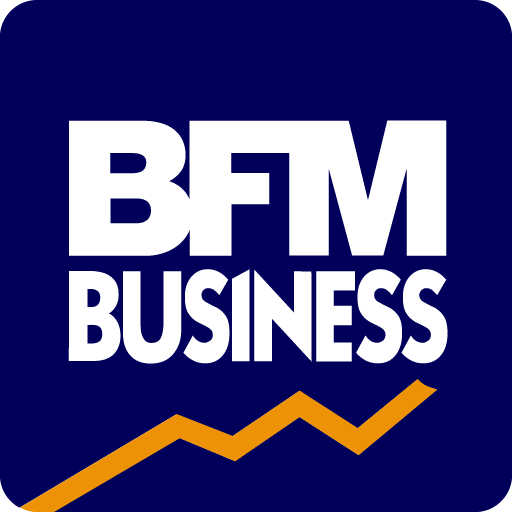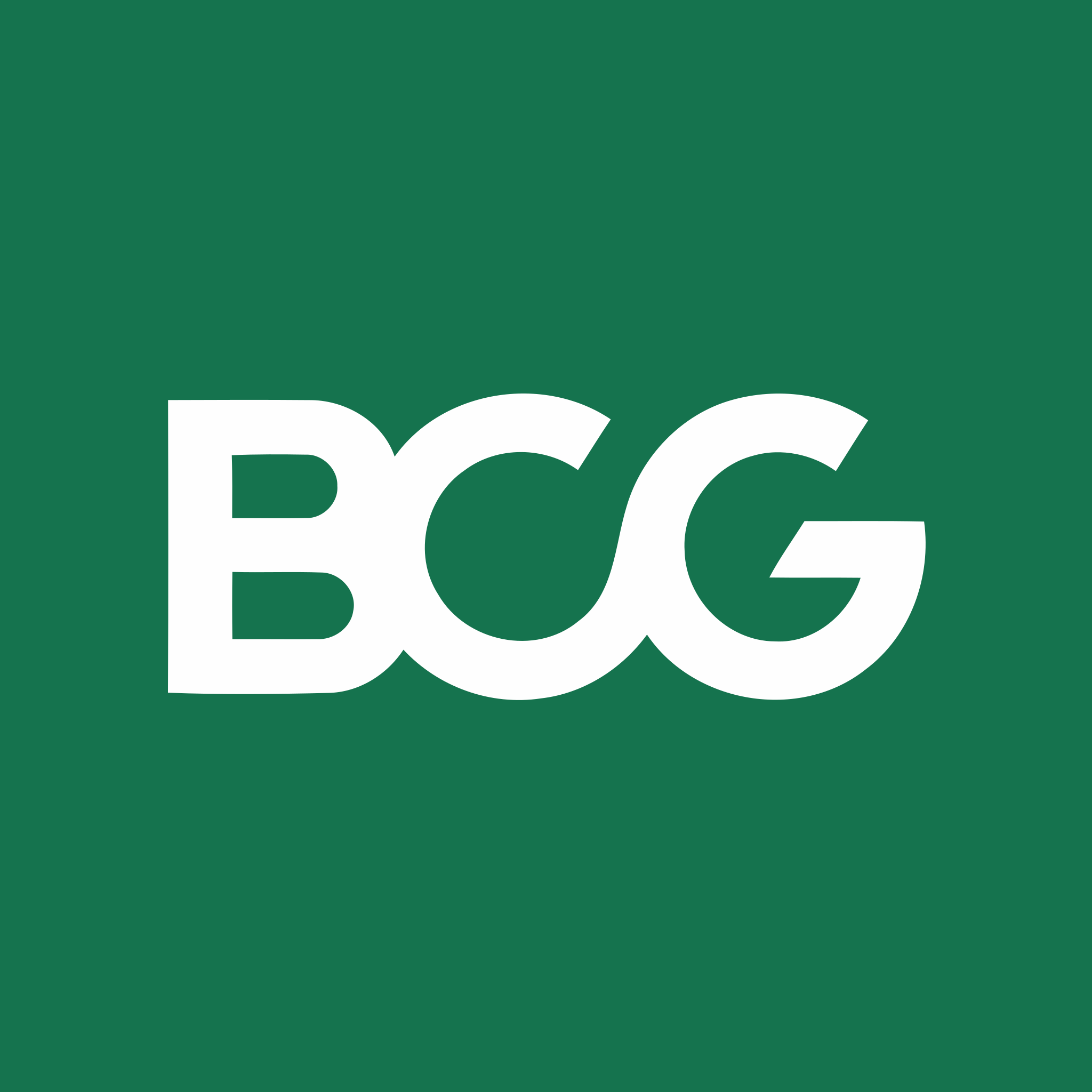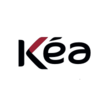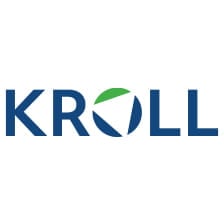Summary of our market study
to understand this market
Detailed content of our market study
 Inforamtion
Inforamtion
- Number of pages : 35 pages
- Format : Digital and PDF versions
- Last update :
 Summary and extracts
Summary and extracts
1 Market Overview
1.1 Definition and scope of study
Dietary supplements are food products that provide additional benefit to the body in the form of a concentrated source of nutrients and are marketed in dose form to supplement the diet. They may contain various ingredients (vitamins, minerals, plants and herbs) and be marketed in different formats (capsules, tablets, powder) to meet a wide range of needs and serve different purposes: fighting stress, fatigue, digestive disorders, slimming, skin beauty, hair beauty and sports performance.
However, they are neither foods nor drugs and cannot claim therapeutic action but are recommended, especially by health professionals. The uncertainties surrounding dietary supplements are further reinforced by the warnings that are regularly issued by scientific committees about some components of supplements, so it must be taken into account that some people question the benefits of these drugs and even report cases of side effects.
It expects the market to grow at a compound annual growth rate (CAGR) of9 percentfrom2023to2030, in light of the favorable outlook toward the medical nutrition market, considering the growing application for the treatment of malnutrition and cardiovascular diseases.The industry is largely dominated by the United States.
On the production side, there are many specialized or multipurpose players, while on the distribution side, sales are divided among pharmacies, parapharmacies, supermarkets, and direct or online sales.
Like the food industry in general, dietary supplements are now also being influenced by natural and customization trends, which leaves the door open for new small players to enter this renewing market. In a developing market, operators seek to diversify their offerings and capture the most promising segments. This study deals with dietary supplements as a whole, but there is a specific study on dietary supplements for sports.
1.2 Global market
The global market size for dietary supplements has been estimated at $*** billion in **** and is expected to grow at a compound annual growth rate (***) of *% from **** to ****.
The global market is expected to witness significant growth in light of the favorable outlook toward the medical nutrition market, considering the growing application for the treatment of malnutrition and cardiovascular diseases.
In addition, in recent years, the increase in sales volume of sports nutrition products in major markets such as the United States and China, along with the launch of new products, is likely to have a significant impact on the industry over the forecast period.
Growing consumer awareness of nutrition, health and wellness is driving market growth.
Global market for dietary supplements World, ****-****, in billions of dollars grandviewresearch.com
1.3 The U.S. market
The size of the U.S. nutritional supplements market has been estimated at $**.** billion in **** and is expected to grow at a compound annual growth rate (***) of *.* percent from **** to ****.
The main factors driving the market growth are the growing population of elderly people, increasing awareness and focus on preventive health care and growing demand for sports nutrition supplements. In addition, consumers are moving toward self-directed care, which is also expected to drive demand for dietary supplements in the United States.
U.S. market for dietary supplements United States, ****-****, in billions of dollars grandviewresearch.com
1.5 International trade
In the absence of comprehensive data on imports and exports of the general category of dietary supplements, we analyze U.S. international trade in vitamins, which is the most popular type of dietary supplement.
To present the following graphs, reference was made to the HS code of UN Comtrade heading ****, which includes"provitamins and vitamins, natural or reproduced by synthesis (***), their derivatives used principally as vitamins, and mixtures thereof."
As the above chart shows, the United States is a net importer of vitamins and pro-vitamins. In fact, the foreign trade coverage ratio has always remained below unity over the reported period, as imports have always exceeded exports. However, looking at the data from **** to **** shows a gradual increase in U.S. exports to other states, supporting an increase in the coverage ratio.
Import-Export of vitamins and derivatives U.S., ****-****, in billions of dollars comtradeplus.un.org
In terms of imports, the largest supplier of vitamins and derivatives to the United States is China, which accounts for more than half of total imports (***), followed by India and France with smaller shares.
Main supplier countries of vitamins and derivatives Usa, ****, % comtradeplus.un.org
Regarding exports, again China ranks first, accounting for ** percent ...
1.6 COVID-19 Impact
The main effect of the COVID-** pandemic has been to make people more careful and responsible about their health and well-being. As a result, the consumption of dietary supplements has increased significantly. In fact, the dietary supplement industry has experienced the highest growth in more than two decades, increasing by **.* percent in ****[***].
The Council for Responsible Nutrition (***), the leading trade association for the dietary supplement and functional food industry, released the results of a consumer survey focused on COVID-** to understand the impact of the pandemic on this industry.
"From CRN's COVID-** survey, we could see that the pandemic not only encouraged most Americans to be more aware of their health and well-being, but the crisis also forced consumers to adapt to current realities and change some of their previous lifestyle behaviors," said Brian Wommack, senior vice president for communications at CRN. "The **** survey results continue to show an increased focus on ingredients that support overall health and wellness and immunity. More consumers are working from home, avoiding the gym, experiencing shopping restrictions and juggling financial hardships. Thus, while there are declines for ingredients and niche categories, usage is stable among vitamin and mineral supplements, signaling an increased focus on ...
2 Demand analysis
2.1 Demand in the U.S
Trends in the demand for supplements over the past * years are shown below, with a percentage breakdown of generic users and a more specific one involving the adult age group, which is found to have a greater impact on total users in the US.
Trend in demand for supplements Usa, ****, % crnusa.org
The **** CRN/Ipsos Consumer Survey found that about three-quarters of Americans use dietary or nutritional supplements.
Slightly more than half of users, or ** percent; say they regularly use this product in their daily lives.
The data show a remarkable picture of continuity and paint the landscape of a vibrant industry. Although overall use is down slightly from the pandemic peak, reported use of immune-boosting supplements, including vitamin D, vitamin C, and zinc, has remained stable.
Seventy-four percent of Americans and ** percent of users of dietary supplements say they trust the relevant industry, this level appears to have held steady over time.
In addition, trust in the safety and quality of sports nutrition and weight management supplements has increased slightly since ****. Currently, ** percent of users say they are confident about the safety and quality of sports nutrition supplements (***).
Consumer use and opinions of supplements U.S., ****, % ipsos.com
2.2 Consumer profile
Age and gender
In recent years, penetration of the supplement category has increased organically across age and gender groups. However, there are some differences worth noting.
First, as far as age group is concerned, it appears that the adult group, thus ** years and older, is prevalent, accounting for about ** percent of total users.
Percentage breakdown of users by age U.S., ****, % crnusa.org In addition, in terms of gender, the distribution appears to be balanced between men and women. As a percentage, women appear slightly more among vitamin users. Percentage breakdown of users by gender U.S., ****, % crnusa.org
In general, supplement use remains higher among women, the elderly , and those with higher levels of education and/or higher household incomes.
2.3 Demand drivers
The demand for dietary supplements is inevitably linked to consumers' habits and preferences, especially in terms of their focus on health and wellness and the specific use for which they need these products.
Attention to health in general
Customers' awareness and consciousness of the importance of health and wellness has grown in recent years in the United States, especially with regard to nutrition.The most common reason U.S. consumers use supplements is to support general health (***). However, the breakdown of sales growth in the category shows that immunity emerges as the priority currently.
Mental health and sleep support
Consumers are also turning to mental health and sleep support supplements to help manage stress.There is a wide variety of ingredients in mental health and sleep support products, ranging from vitamins and minerals to adaptogens to CBD.recent research on the gut-brain connection will also influence this segment. Nearly one in three U.S. consumers say they are interested in digestive health products that can also improve mental health.
Socioeconomic development and the increase in disease
Rapid socioeconomic development over the decades has resulted in increased cases of heart disease, cancer, and diabetes in various segments of the U.S. population.These ...
2.4 Exogenous factors influencing demand
In addition to consumer preferences for specific products, which can be considered an endogenous factor, there are some exogenous factors, mainly related to demographics, that directly influence the demand for dietary supplements. The main ones we have identified are:
Aging population
Taking dietary supplements and vitamins can also have positive effects on disorders and weaknesses due to aging. The fact that the U.S. population is aging is therefore an important demand factor.
Percentage of elderly population (***) in the total population United States, ****-***** (***), in percent Source: ****
New lifestyles
Considering the already sedentary lives of most Americans, and adding the effect of the COVID-** crisis and the advent of smart working, it is easy to see how individuals may require more dietary supplements to help themselves stay healthy and avoid the problems associated with these new sedentary lifestyles.
Rising health care costs
The United States is infamous for its undoubtedly high health care costs. The further increase in these can certainly be seen as one of the reasons for the increased attention paid by U.S. citizens to prevention and wellness, which has encouraged the demand for dietary supplements and vitamins. When the Council for Responsible Nutrition asked consumers about their ...
2.5 Geographic distribution of dietary supplement users
Source: ****
Although the range of different percentages of use is not too wide, we can still see that the southern states of the U.S. consume more dietary supplements than the other regions.
Overall, we can say that the use of these products is well distributed throughout the country.
3 Market structure
3.1 Market structure and major players
The market for dietary supplements in the United States is dynamic and evolving. Competitively, The market is moderately fragmented and moderate to high competition is expected among companies due to the presence of numerous players across the country. North America is one of the key regions with a large number of players and contract manufacturers based in the region. Vertical integration within the value chain has pushed the supply chain to be more compact and efficient. The industry in North America is shifting toward a less centralized and disordered trend.(***)
The following are the major players in the U.S. supplement market:
Nestle S.A: Swiss multinational corporation and one of the largest food and beverage companies in the world. Founded in **** by Henri Nestlé, the company has a long history in the food industry, starting with the production of infant formula and gradually expanding its product offerings.
Procter&Gamble: The Procter & Gamble Group is a U.S. multinational consumer goods company headquartered in Cincinnati, Ohio.
Post Holdings Inc: is a U.S. consumer packaged goods holding company headquartered in St Louis, Missouri, with operations in the store center, refrigerated, food service, and food ingredient categories.
Pfizer Inc: is a U.S. ...
3.2 Value chain
Source: ****
First, ingredient suppliers produce the raw materials, that is, the nutrients, but also the flavorings or colorings that will go into dietary supplements.
Manufacturers use these ingredients to produce dietary supplements. There are two types of manufacturers: processors, who supply the supplements to various companies that will market them, and manufacturers, who directly market the supplements they produce.
The products brought to market are then distributed through different channels and consumed by the population.
3.3 stages of production of dietary supplements
The manufacturing process of dietary supplements shapes the market structure of these products and consists of ** consecutive stages[***]:
Stage * The formula: formula refers to the mixture of appropriate doses of raw materials that enable manufacturers to provide the required structural and functional claims. Phase * Raw material selection: a well-formulated dietary supplement requires the use of evidence-based ingredients to help ensure product efficacy. Step* Formulation Pricing: the first step begins when the brand owner submits a pricing request to the contract manufacturer (***). In turn, the CM will create its own version of the formulation and check raw material prices for key ingredients with various suppliers. Once all this is done, the CM will provide a quote to the brand owner. Step * Submission of the purchase order Step * Ordering of raw materials Step * Raw materials arrival, quarantine and testing: once raw materials arrive at the CM, cGMP regulations require that they be quarantined and tested before being released into inventory. Step * Bench work: once all raw materials have been released into the inventory, the CM will conduct a bench work, which is a research and development batch. Here, the raw materials are mixed together and a limited number of tablets and capsules are ...
3.4 Distribution channels
Overall, by **** , the offline distribution channel was estimated to dominate the market with a **.** percent revenue share. An increase in dietary supplements prescribed by physicians to treat gastrointestinal disorders, immunity-related problems, bone health, folic acid deficiencies, heart health, and age-related macular degeneration, among others, is a key factor driving demand for dietary supplements through offline distribution channels. In addition to this, elderly consumers in the United States prefer to purchase dietary supplements through traditional distribution channels since they are not used to buying online.
In terms of offline sales channels in ****, the first place (***) with **% market share. Next is the supermarket, warehouse clubs that are substantiated by wholesale hypermarkets, and finally, there are retailers specializing in vitamins.
As for the online distribution channel, it is expected to experience a faster growth rate than offline, at *.* percent between **** and ****. The advent of the COVID-** epidemic has accelerated the growth of e-commerce in general, including online sales of dietary supplements.
(***)
Supplement sales channels by market share U.S., ****, % crnusa.org
4 Supply analysis
4.1 Formulations and classification of dietary supplements
Dietary supplements come in various packages, sizes and types, depending on how they are taken. More specifically, they can be taken in one of the following forms[***]:
Oral pills or powders for relatively rapid absorption; Sublingual drops or disintegrated oral tablets to facilitate intake and limit damage to their active ingredient; Nasal sprays or drops to further enhance absorption; Intravenous and intramuscular injectables for rapid absorption and action; Bone-injected for slow and gradual absorption and prolonged action.
Dietary supplements can be classified according to several criteria.
According to theNational Medicines Agency, dietary supplements are divided into two categories according to their intended use (***):
Dietary supplements as food products that supplement the usual diet. Food products intended for a particular diet, such as beverages, which due to their special composition are intended for certain population groups, for example, healthy infants or children between the ages of two and five years or special categories of people with disordered metabolism or categories of people with special physiological conditions.
In addition, dietary supplements are also classified according to the consistency or form in which they are available:
Vitamin and mineral supplements, whether combined in the form of multivitamins or multiminerals or not; Protein supplements in ...
4.2 Prices
The Drug Store News website published the results of a survey conducted by IRI in **** that showed the price ranges of different types of dietary supplements.
source: Drug Store News Drug Store News
All types of supplements have a fairly wide price range, ranging from the cheapest to the most expensive options. The last category offers a narrower price range.
the following are examples of supplements on the market in the US of different types.
Ultimate **+ Probiotics - Immune Support, Digestive & Respiratory Health **,** $ Vitamin D* - Immune Support & Bone Health - *,*** IU (***) **,** $ Triple Strength Fish Oil ****mg - ** Softgels **,** $ ** Plus One Daily - ** Caplets *,** $
4.3 What does the science say?
We have identified the different categories of dietary supplements. But what do scientists have to say about them and their effectiveness[***]?
Vitamins and minerals: Research shows that vitamin D plays an important role in bone health, immune function, and maintenance of cardiovascular health. Recent studies have also found an association between vitamin D supplementation and reduced risk of death from cancer. In addition, government research shows that Americans do not get enough vitamin D from foods alone. Research also shows that calcium and vitamin D supplementation can reduce the risk of total and hip fractures in middle-aged and older adults. Special supplements: Scientific evidence demonstrates the benefits of probiotics for gut health and immune health. Evidence supports their use as a safe way to prevent digestive problems and maintain good gut health. There are more beneficial bacteria than cells in the human body and, like essential nutrients, probiotics are essential for good health. Herbs and botanicals: The action of botanicals varies from mild to potent. A botanical with a mild action can have subtle effects. Chamomile and peppermint, for example, are usually consumed in tea form to aid digestion and are generally considered safe for most people. Some mild-acting botanicals may ...
5 Regulations
5.1 Federal regulations on dietary supplements
Dietary supplements are products intended to supplement the diet. They are not drugs and are not intended to treat, diagnose, mitigate, prevent, or cure disease. TheFDA is the federal agency that oversees both supplements and drugs, but FDA regulations for dietary supplements are different from those for prescription or over-the-counter drugs.
Drugs must be approved by the FDA before they can be sold or marketed. Supplements do not need such approval. Supplement companies have a responsibility to demonstrate that their products are safe and that the claims on the label are true and not misleading. However, if the product does not contain a "new dietary ingredient" (***), the company is not required to provide FDA with proof of safety before marketing the product.
Dietary supplement labels may include certain types of health claims. Manufacturers may say, for example, that a supplement promotes health or supports a body function (***). These claims must be followed by the statement "This statement has not been evaluated by the Food and Drug Administration. This product is not intended to diagnose, treat, cure or prevent any disease."
Manufacturers must follow good manufacturing practices (***) to ensure the identity, purity, strength and composition of their products. If the FDA finds ...
6 Positioning of actors
6.1 Segmentation
- Nestlé Groupe
- Pfizer
- Alacer Corporation
- Post Holdings
- Pharmavite
- Bountiful Company
- Abbott Groupe
- Nature's Bounty (Nestlé Health Science)
- Now Foods
- Garden Of Life
- Optimum Nutrition (Glanbia Group)
- Thorne Research
- MegaFood
- Smartypants
All our studies are available online in PDF format
Take a look at an example of our research on another market!
 Choosing this study means :
Choosing this study means :
Access to more than 35 hours of work
Our studies are the result of over 35 hours of research and analysis. Using our studies allows you to devote more time and added value to your projects.
Benefit from 6 years' experience and over 1,500 industry reports already produced
Our expertise enables us to produce comprehensive studies in all sectors, including niche and emerging markets.
Our know-how and methodology enable us to produce reports that offer unique value for money.
Access to several thousand articles and paid-for data
Businesscoot has access to all the paid economic press as well as exclusive databases to carry out its market research (over 30,000 articles and private sources).
To enhance our research, our analysts also use web indicators (semrush, trends, etc.) to identify market trends and company strategies. (Consult our paying sources)
Guaranteed support after your purchase
A team dedicated to after-sales service, to guarantee you a high level of satisfaction. +44 238 097 0676
A digital format designed for our users
Not only do you have access to a PDF, but also to a digital version designed for our customers. This version gives you access to sources, data in Excel format and graphics. The content of the study can therefore be easily retrieved and adapted for your specific needs.
 Our offers :
Our offers :
the food supplements market | United States
- What are the figures on the size and growth of the market?
- What is driving the growth of the market and its evolution?
- What is the positioning of companies in the value chain?
- Data from several dozen databases
5 reports pack (-15%) USA United States
- 5 reports at €75.6 excluding VAT per study to choose from our American catalogue for 12 months
- Save 15% on additional studies purchased
- Choose to be refunded any unused credit at the end of the 12-month period (duration of the pack)
See the terms and conditions of the pack and the refund of unused credit.


















